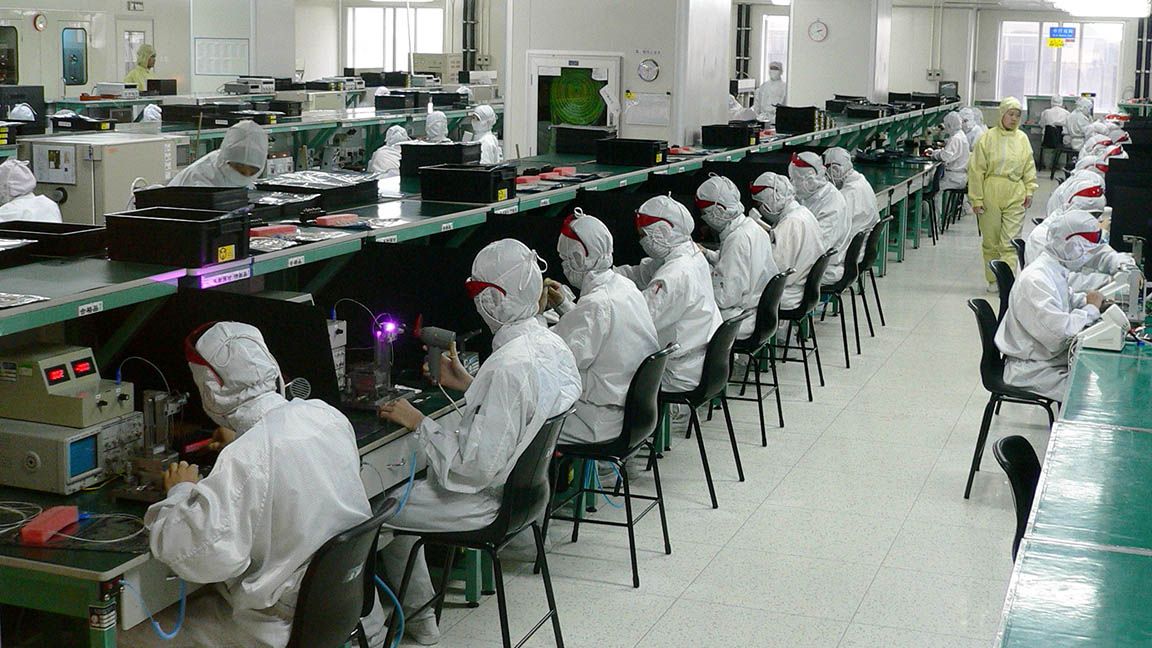The country’s leading export product—electronics and semiconductors are hurting from a confluence of risk factors, even as it still recovers from the impact of the pandemic.
Still reeling from the effects of the pandemic, the electronics industry—still a top export earner for the country—is hurting much from the confluence of factors/risks such as rising fuel costs, power costs, inflation and the continuing war in Ukraine (which in turn affected the supply chain).
All these, despite the competitiveness brought about by a weak peso (which means more peso revenues from every dollar of export earnings), according to Danilo C. Lachica, president of the Semiconductor and Electronics Industries in the Philippines Foundation Inc. (SEIPI) told Business World Live on One News Channel yesterday
“We are seeing increases in our cost of operations. Some suppliers of power have increased their prices as well in response to the shortage of coal,” said Lachica.
It’s really very painful right now. We’re still trying to recover from the impact of the pandemic and yet these factors, notwithstanding the devaluation to the peso, is just creating havoc.”
Lachica said the local electronics industry is trying to absorb costs to protect consumers, adding that demand for electronics remains strong even if their margins get hit.
“We expect a 10 percent increase in our export performance this year, but then again, the margins will be smaller because of the higher costs,” he said.
“Even during the pandemic, the demand was always there,” he said. “It was really a matter of being able to come up with the supply especially in the context of the shortage of semiconductor wafers. We really have to manage those margins and to the point that we, the companies have to absorb a lot of these costs.”
Lachica said semiconductors would drive the sector’s export growth this year.
“The driving factors would be mostly from semiconductors, the components and also demand for medical electronics, telecommunications, industrial products, which are really spurred by the use of data computing, big data, artificial intelligence, Internet of Things and Industrial Revolution 4.0,” he added.
He said they were lining up meetings with incoming President Ferdinand R. Marcos, Jr. and his Cabinet to explain the situation and the threats that the industry faces.
Philippine electronics exports rose by 12.9 percent to a record $45.92 billion last year, SEIPI said in February.
For December alone, the country’s electronics exports went up slightly to $3.92 billion from $3.9 billion a year earlier.
Telecommunication exports rose almost three times, automotive electronics increased by 39 percent, office equipment went up by 29.7 percent and semiconductors inched up by 1.61 percent.
Hong Kong, the United States, China, Singapore and Japan were the top destinations for Philippine electronics exports in December.
Electronics sectors that posted growth in exports in 2021 were telecommunications (138 percent), medical or industrial instrumentation (37.49 percent), electronic data processing (29.51 percent), consumer electronics (19.45 percent), office equipment (19.32 percent), control and instrumentation (12.92 percent), and components or devices or semiconductors.
Electronics is the country's top export, accounting for almost 60 percent of the total. Latest data showed that dollar earnings from electronic products jumped 15 percent to $3.44 billion in February this year.
As of December 2021, Hong Kong was the leading country of destination for electronic exports from the Philippines at 20.08 percent. This was followed by the United States and China. Electronic products were the leading export goods of the country
Electronic product means any manufactured product or device or component part of such a product or device that can generate or emit electromagnetic or sonic radiation such as, but not limited to, X-rays, ultrasonic waves, microwaves, laser light or ultraviolet light.
The Philippine Electronics Industry is classified into 73 percent Semiconductor Manufacturing Services (SMS) and 27 percent Electronics Manufacturing Services (EMS). Most of the electronics businesses in the country operate in four key areas: Metro Manila, CALABARZON, Northern/Central Luzon and Cebu.
Where does the Philippines export semiconductors to?
As of December 2021, Hong Kong was the leading country of destination for semiconductor products exported from the Philippines at US$724 billion worth of semiconductor products.
Consumer Electronics Market size was valued at over US$ 1 trillion in 2020 and is estimated to grow at over 8 percent from 2021 to 2027. Rapidly increasing internet penetration across the globe will drive the market growth.
Electronic products include personal computers, telephones, MP3 players, cell phones, smart phones, audio equipment, televisions, calculators, GPS automotive electronics, digital cameras and players and recorders using video media such as DVDs, VCRs or camcorders.
Common items in the electronics sector include mobile devices, televisions, and circuit boards. Industries within the electronics sector include telecommunications, networking, electronic components, industrial electronics, and consumer electronics.
The global electronic products market is expected to grow at a compound annual growth rate (CAGR) of 11.2 percent, from $948.78 billion in 2020 to $1055.29 billion in 2021.
Latest trends in electronics include: smart grid solutions, innovation of electric vehicles, wearable technology trends, artificial intelligence, prefabricated products, internet of things technologies, robotics and products that electronically engineer the future.
Tags: #SEIPI, #electronicsandsemiconductors, #riskstoitsgrowth, #risingproductioncosts
